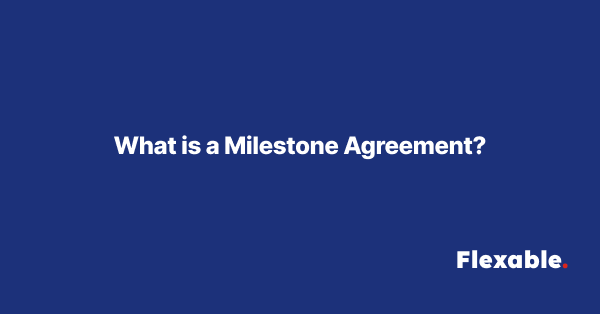In the freelancing world, a milestone agreement is a structured approach to managing projects by breaking them down into smaller, manageable phases, or “milestones,” with payments tied to the completion of each phase. This type of agreement benefits both freelancers and clients by ensuring transparency, accountability, and steady progress throughout the project. Milestone agreements are particularly useful for large, complex projects where dividing the work into stages helps keep both parties aligned.
How Does a Milestone Agreement Work?
A milestone agreement outlines specific deliverables, deadlines, and payment terms for each phase of a project. Before starting the project, the freelancer and client collaborate to define the scope of work and break it down into logical steps or milestones. Each milestone has clear objectives, such as completing a draft, delivering a prototype, or finishing a specific module.
For example, a freelance app developer might structure a project into milestones like:
Initial wireframes and design approval.
Backend setup and API integration.
Completion of core app functionality.
Final testing and deployment.
Payment is typically made upon the successful completion of each milestone, providing financial security for the freelancer and giving the client control over their investment.
Key Components of a Milestone Agreement
Detailed Scope of Work: The agreement should outline what will be delivered in each milestone, including specific tasks, features, or assets.
Deadlines: Clear timelines for completing each phase keep the project on track and allow both parties to manage their schedules effectively.
Payment Terms: The agreement should specify the payment amount for each milestone and the conditions for release (e.g., client approval of deliverables).
Revision Policies: Including terms for revisions ensures both parties understand the limits on adjustments or changes for each phase.
Communication Plan: Regular updates and progress reports ensure transparency and allow for prompt resolution of issues.
Advantages of a Milestone Agreement
Milestone agreements provide a range of benefits that make them a popular choice for managing freelance projects.
For freelancers, milestone agreements offer financial security, especially for long-term projects. By receiving payments at regular intervals, freelancers can maintain a steady cash flow and reduce the risk of non-payment. Additionally, milestone agreements help freelancers manage their workload by breaking down large projects into smaller, more achievable tasks.
For clients, milestone agreements provide greater control over the project. They can review deliverables at each stage, ensuring the work meets their expectations before proceeding. This phased approach also minimizes risk by allowing clients to assess progress and make adjustments as needed without committing to the entire project upfront.
Challenges of a Milestone Agreement
While milestone agreements offer many advantages, they can present challenges if not managed properly. For freelancers, underestimating the time or resources required for each milestone can lead to delays or disputes. Similarly, clients may demand additional work beyond the agreed-upon scope, known as scope creep, which can disrupt the project’s timeline and budget.
Clear communication and detailed agreements are essential to avoid misunderstandings. Freelancers should ensure that each milestone’s deliverables and expectations are well-documented, while clients should provide timely feedback to keep the project on schedule.
When to Use a Milestone Agreement
Milestone agreements are ideal for large or complex projects where breaking the work into phases helps manage progress. Examples include software development, content creation for multi chapter books, or designing a multi page website. For smaller or straightforward tasks, simpler pricing models like hourly rates or flat fees may be more appropriate.
Best Practices for Creating a Milestone Agreement
Collaborate on Planning: Work closely with the client to define milestones that align with their goals and the project’s overall objectives.
Set Realistic Timelines: Allow sufficient time for each phase, considering potential revisions and unforeseen challenges.
Communicate Clearly: Regular updates and check-ins ensure both parties stay aligned and help build trust.
Use Escrow Services: Platforms like Upwork or Fiverr often offer escrow services that hold milestone payments until deliverables are approved, providing security for both parties.
Conclusion
A milestone agreement is a powerful tool for freelancers and clients alike, offering a structured, transparent approach to managing projects. By breaking work into clearly defined phases with tied payments, both parties can ensure steady progress and minimize risks. Whether you’re a seasoned freelancer handling a complex project or a client looking to manage your investment effectively, a milestone agreement can help foster a collaborative and productive partnership.

